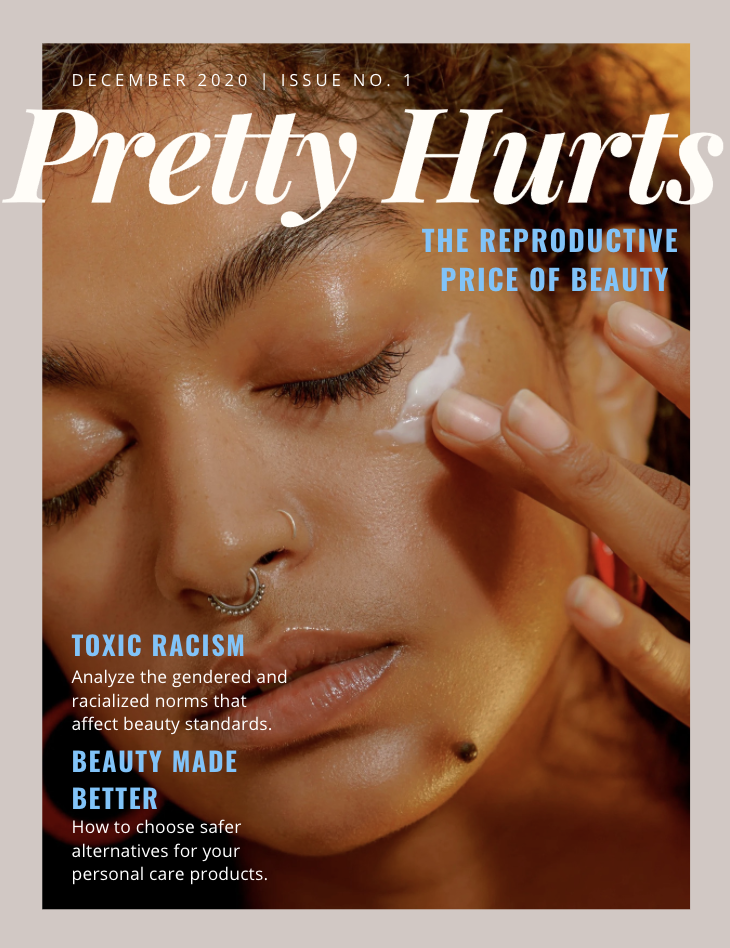Pretty Hurts: The Reproductive Price of Beauty

By: Alyssa Moreno, Fiona Griffin, Joussie Camacho, Leah Thomas, and Lindsey Snetsinger
What’s in your soap?
Our project investigates endocrine disruptor chemicals (EDCs) affecting women’s health, specifically in terms of reproduction and fertility. A common vehicle for human exposure to these toxic chemicals is through direct dermal contact with personal care products including lotion and perfume, to name a few. One particular kind of endocrine disruptor typically found in such cosmetic products is phthalates, which are synthetic chemicals used to give plastic its flexibility (Romain et al, 2014). Dozens of phthalates have been developed over the years and continue to be widely produced despite findings suggesting direct impairment on reproductive health upon exposure to such EDCs. In fact, one kind of phthalate known as di-n-butyl phthalate (DBP), poses a threat specifically to women of reproductive age, yet continues to be widely used in beauty products (Romain et al, 2014). In both human and animal models, phthalates have been shown to reduce fertility and decrease pregnancy rates. Further research is warranted to investigate the restrictions (or lack thereof) on the manufacturing of such EDCs that have allowed the industry to incorporate them into so many essential personal care products despite their adverse effects on human health. This topic needs to be explored not only through a biological lens in order to reveal (and disrupt) the mechanisms through which these EDCs interfere with the natural reproductive pathway, but also through a social and historical lens to evaluate the lack of concern regarding women’s health and the lack of policy regulating these products in today’s profit-driven market.
comments powered by Disqus